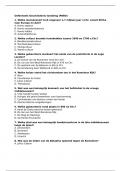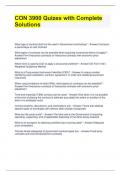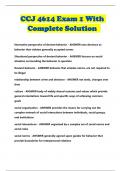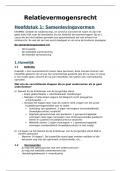LECTURES ECONOMICS MODULE
Videos: valuation of ecosystems
Measure value:
- Willingness to pay different values people place on things
Price IS NOT value
ecosystem services (classes of values)
TOTAL ECONOMIC VALUE
USE VALUES
Direct direct utility from using camping, walking a trail, get wood, hunt
Indirect indirect through another thing we use bees for pollination, mangrove to protect coast, shade from trees
we don’t know the effect until they are gone
NON-USE VALUES
Bequest (non-tangible) which feels better to pass on: parking lot vs. forest
Existence utility from satisfaction from knowing that something exists (whales, Grand Canyon): WTP for living in
a world where the amazon rainforest exists
OPTION VALUES
= value of having the option of using something in the future
e.g. house: you don’t know if you want to buy it and pay the owner to think about it for 3 months.
Summarizing the CV method:
For bequest, existence and option values stated preference methods (= I would pay ... to preserve a forest; WTP / WTA)
Stated bid amount
No response WTP = 0
LECTURE: ENVIRONMENTAL VALUATION I: CONTINGENT VALUATION (CV) Pieter van Beukering
What is the economic value of this coral reef?
In order to answer that question, we need to decide: what does the reef represent to society?
Where to start: tourism, fishing, coastal protection (energy buffer), biodiversity, nursery
how to measure these values??
Total economic value (TEV)
- Use values
o Direct use
o Indirect use
- Non-use values
o Bequest value
o Existence value
Moving towards intangible services, is hard.
e.g. fish you can measure the value of fish in price/kilogram
,TOTAL ECONOMIC VALUE: use values, non-use values, direct use, indirect use, option value, bequest values, existence values
Most studies measure only 1 category. Almost no study calculates the total economic value.
Toolbox:
Valuation is just doing: Value = quantity * price
Complexity is in the quantity or in the price
e.g. in case of the reef price of fish = easy, just go to the market. But how do you determine the Q?
e.g. how much does the reef protect against storms? Nr of houses protected?
Sated: what are you willing to pay for a reef (artificial market)
PHYSICAL LINKAGES (cost estimates)
Market prices
Good: Straightforward and inexpensive
Critique: rarely sufficient as a stand-alone valuation technique captures only direct use values
e.g. we buy wood, but in that price, the value of the complete forest is not included
Replacement cost
The value of a natural reservoir can be estimated as the cost of replacing it with a man-made reservoir
- Critique:
o You assume that the value of the two ‘lakes’ is equal
o Not based on people’s preferences for the goods/services values
o Difficult to find exact replacements of the goods/services
Example: coastal reefs protection value
More frequent floods when coral reefs and mangroves decline costs for building a higher dike
Cost of dike = value of healthy reef & mangrove.
, > price of concrete goes up: the value of coral reefs goes up (= strange disconnect)
Damage cost avoided
= the monetary value of up-stream
If an ecosystem degrades, how much damage is occurring?
Decline in coral reefs: how more often do floods occur and what is the damage that comes with this flood
= way to value the reef
Preventative insurance: your premium is lower when you take care of your reefs. Or use money from premium to re-strengthen
the reefs
- Useful for valuing ecosystems that provide some form of natural protection.
- Critique:
o Most cases of avoided damage remain hypothetical.
Production function approach
Fishery value of a mangrove can be calculated by estimating the lost value of the catch in a degraded or destroyed mangrove
area.
- Production function method values ecosystem services as inputs in production of commercially marketed goods
- Similar to using market prices, yet more indirect valuation
REVEALED PREFERENCE (use values)
Hedonic pricing
Monetary value of environmental attributes can be valued by comparing house prices with different surroundings
- What environmental aspect determine the real estate value?
- Same home located near beautiful park = more expensive difference in price is the valuation of the park
- Complexity:
o Homes are never the same
o Other influences that influence the house price (e.g. negative influences: congested road or polluting factory)
o Not black and white: it may be there, but not very close by or .. (distance decay!)
- You need very comprehensive database with multiple transactions, that takes into account the multiple influencing
factors, home differences, and all other explanatory factors
- This information is usually there, so you can determine the positive and negative aspects.
Travel cost method
= The value of a recreational site can be estimated from the number of visitors and the cost of travelling there
- For valuing recreational sites (eg. Parks, forests, heritage)
- Travel costs to a site can be regarded as the prices of access to the site (indirect method)
- Spatial issues in economic valuation (aggregation)
- Multiply WTP with number of visitors (from different zones)
Videos: valuation of ecosystems
Measure value:
- Willingness to pay different values people place on things
Price IS NOT value
ecosystem services (classes of values)
TOTAL ECONOMIC VALUE
USE VALUES
Direct direct utility from using camping, walking a trail, get wood, hunt
Indirect indirect through another thing we use bees for pollination, mangrove to protect coast, shade from trees
we don’t know the effect until they are gone
NON-USE VALUES
Bequest (non-tangible) which feels better to pass on: parking lot vs. forest
Existence utility from satisfaction from knowing that something exists (whales, Grand Canyon): WTP for living in
a world where the amazon rainforest exists
OPTION VALUES
= value of having the option of using something in the future
e.g. house: you don’t know if you want to buy it and pay the owner to think about it for 3 months.
Summarizing the CV method:
For bequest, existence and option values stated preference methods (= I would pay ... to preserve a forest; WTP / WTA)
Stated bid amount
No response WTP = 0
LECTURE: ENVIRONMENTAL VALUATION I: CONTINGENT VALUATION (CV) Pieter van Beukering
What is the economic value of this coral reef?
In order to answer that question, we need to decide: what does the reef represent to society?
Where to start: tourism, fishing, coastal protection (energy buffer), biodiversity, nursery
how to measure these values??
Total economic value (TEV)
- Use values
o Direct use
o Indirect use
- Non-use values
o Bequest value
o Existence value
Moving towards intangible services, is hard.
e.g. fish you can measure the value of fish in price/kilogram
,TOTAL ECONOMIC VALUE: use values, non-use values, direct use, indirect use, option value, bequest values, existence values
Most studies measure only 1 category. Almost no study calculates the total economic value.
Toolbox:
Valuation is just doing: Value = quantity * price
Complexity is in the quantity or in the price
e.g. in case of the reef price of fish = easy, just go to the market. But how do you determine the Q?
e.g. how much does the reef protect against storms? Nr of houses protected?
Sated: what are you willing to pay for a reef (artificial market)
PHYSICAL LINKAGES (cost estimates)
Market prices
Good: Straightforward and inexpensive
Critique: rarely sufficient as a stand-alone valuation technique captures only direct use values
e.g. we buy wood, but in that price, the value of the complete forest is not included
Replacement cost
The value of a natural reservoir can be estimated as the cost of replacing it with a man-made reservoir
- Critique:
o You assume that the value of the two ‘lakes’ is equal
o Not based on people’s preferences for the goods/services values
o Difficult to find exact replacements of the goods/services
Example: coastal reefs protection value
More frequent floods when coral reefs and mangroves decline costs for building a higher dike
Cost of dike = value of healthy reef & mangrove.
, > price of concrete goes up: the value of coral reefs goes up (= strange disconnect)
Damage cost avoided
= the monetary value of up-stream
If an ecosystem degrades, how much damage is occurring?
Decline in coral reefs: how more often do floods occur and what is the damage that comes with this flood
= way to value the reef
Preventative insurance: your premium is lower when you take care of your reefs. Or use money from premium to re-strengthen
the reefs
- Useful for valuing ecosystems that provide some form of natural protection.
- Critique:
o Most cases of avoided damage remain hypothetical.
Production function approach
Fishery value of a mangrove can be calculated by estimating the lost value of the catch in a degraded or destroyed mangrove
area.
- Production function method values ecosystem services as inputs in production of commercially marketed goods
- Similar to using market prices, yet more indirect valuation
REVEALED PREFERENCE (use values)
Hedonic pricing
Monetary value of environmental attributes can be valued by comparing house prices with different surroundings
- What environmental aspect determine the real estate value?
- Same home located near beautiful park = more expensive difference in price is the valuation of the park
- Complexity:
o Homes are never the same
o Other influences that influence the house price (e.g. negative influences: congested road or polluting factory)
o Not black and white: it may be there, but not very close by or .. (distance decay!)
- You need very comprehensive database with multiple transactions, that takes into account the multiple influencing
factors, home differences, and all other explanatory factors
- This information is usually there, so you can determine the positive and negative aspects.
Travel cost method
= The value of a recreational site can be estimated from the number of visitors and the cost of travelling there
- For valuing recreational sites (eg. Parks, forests, heritage)
- Travel costs to a site can be regarded as the prices of access to the site (indirect method)
- Spatial issues in economic valuation (aggregation)
- Multiply WTP with number of visitors (from different zones)










